
|
Astronomy Picture Of the Day (APOD)
 Aurora and Orion
Aurora and Orion
13.11.1995
Looking toward the south from low Earth orbit, the crew of the Space Shuttle Endeavor made this stunning time exposure of the Aurora Australis (southern lights) in April of 1994. The aurora are caused by high energy electrons from the Solar Wind which are funneled into the atmosphere by the Earth's magnetic field.
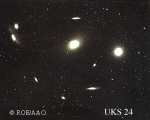 Virgo Cluster Galaxies
Virgo Cluster Galaxies
12.11.1995
Pictured are several galaxies of the Virgo Cluster, the closest cluster of galaxies to the Milky Way. The Virgo Cluster spans more than 5 degrees on the sky - about 10 times the angle made by a full Moon. It contains over 100 galaxies of many types - including spirals, ellipticals, and irregular galaxies.
 Blue Jet Lightning
Blue Jet Lightning
11.11.1995
Recently two new types of lightning have been verified: red sprites and blue jets. These atmospheric discharges occur very high in the Earth's atmosphere - much higher than the familiar form of lightning. Blue jets appear blue in color and go from the tops of clouds to a height of about 50 kilometers.
10.11.1995
Recently two new types of lightning have been verified: red sprites and blue jets. These atmospheric discharges occur very high in the Earth's atmosphere - much higher than the familiar form of lightning.
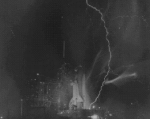 Lightning and the Space Shuttle
Lightning and the Space Shuttle
9.11.1995
There are many things about lightning that are not understood. Lightning has been seen in the atmospheres of Venus, Earth, Jupiter, and Saturn. A leading theory is that collisions of particles in clouds cause large areas of positive and negative charge.
 M104: The Sombrero Galaxy
M104: The Sombrero Galaxy
8.11.1995
The famous Sombrero galaxy (M104) is a bright nearby spiral galaxy. The prominent dust lane and halo of stars and globular clusters give this galaxy its name. Something very energetic is going on in the Sombrero's center, as much X-ray light has been detected from it.
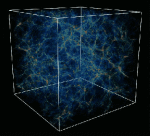 Simulating the Universe
Simulating the Universe
7.11.1995
The above cube represents a chunk of our universe as simulated by the Grand Challenge Cosmology Consortium (GC3). The cube is huge - it would take light 500 million years to cross it. Low density gas is shown as blue, and high density gas as red.
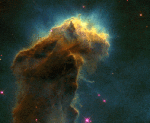 Eagle EGGs in M16
Eagle EGGs in M16
6.11.1995
Star forming regions known as "EGGs" are uncovered at the end of this giant pillar of gas and dust in the Eagle Nebula (M16). EGGs, short for evaporating gaseous globules, are dense regions of mostly molecular hydrogen gas that fragment and gravitationally collapse to form stars.
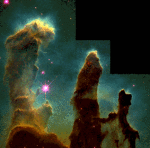 M16: Stars Upon Pillars
M16: Stars Upon Pillars
5.11.1995
How do stars form? This stunning picture taken recently by the Hubble Space Telescope gives us a first hand glimpse. Here evaporating gaseous globules (EGGs) are captured emerging from pillars of molecular hydrogen and dust in the Eagle Nebula (M16).
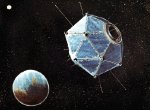 Vela Satellites: The Watchers
Vela Satellites: The Watchers
4.11.1995
In October of 1963 the US Air Force launched the first in a series of satellites inspired by a recently signed nuclear test ban treaty. Signatories of this treaty agreed not to test nuclear devices in the atmosphere or in space.
|
January February March April May June July August September October November December |
|||||||||||||||||||||||||||||||||||||||||||||||||